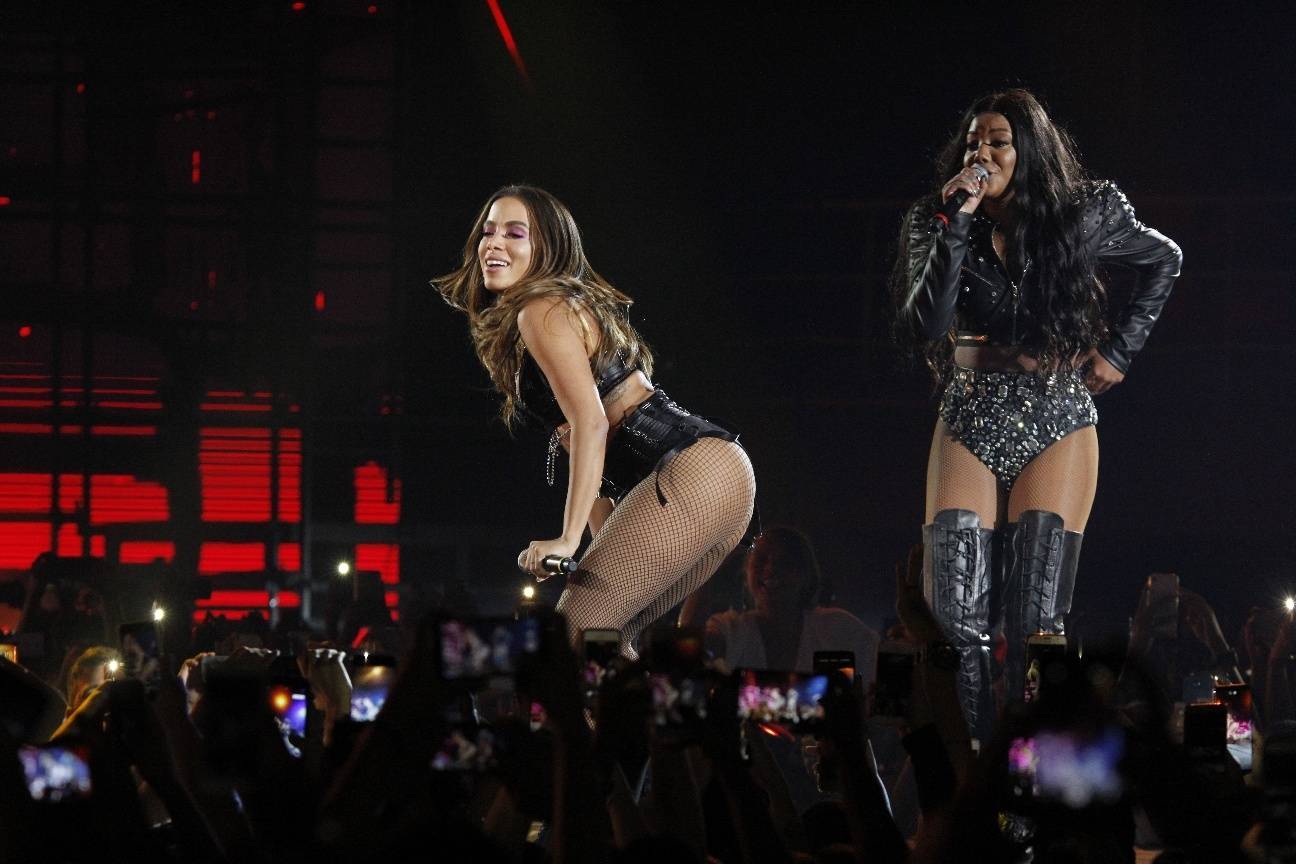In February 2019, Brazilian funk exploded onto the big stage in full force when Ludmilla released the live performance of “Favela Chegou” featuring Anitta. Filmed at the Jeunesse Arena in Rio de Janeiro, the video became an instant standout from her Hello Mundo live DVD and quickly turned into one of the most talked-about collaborations of the year.
At a time when funk carioca was already gaining international attention, this performance pushed it further into the mainstream without losing its essence. No overproduction. No storyline. Just high-voltage energy from two of Brazil’s most powerful pop voices.

The Jeunesse Arena is packed from wall to wall. Fans are waving lights, shouting every word, and moving with the heavy rhythm of funk. As soon as the beat drops, raw and aggressive, the crowd lights up. It’s pure baile funk, loud and proud. When Ludmilla steps out, it’s clear this performance wasn’t made for the cameras. It was made for the people.
Not long after, Anitta walks onto the stage and the place erupts again. She moves like the stage belongs to her—and for those few minutes, it really does. The chemistry between the two artists is magnetic. The choreography feels spontaneous but hits hard, packed with rhythm and attitude.
Unlike many pop videos that rely on cinematic narratives or heavy visual effects, Favela Chegou keeps it real. There’s no backstory. No script. What you see is exactly what was happening that night in Rio: two women, a crowd of thousands, and the spirit of funk shaking the arena from the floor up.
This stripped-down approach is exactly what makes the video hit so hard. The focus stays on the performance, the connection, and the energy exchange between the artists and their fans. The use of dynamic camera movements, confetti blasts, and concert lighting enhances the vibe without distracting from it.
The song itself is a declaration: “A favela chegou, pode acreditar” (“The favela has arrived, believe it”). Funk carioca, born in the favelas of Rio, was often dismissed by mainstream Brazilian media. With this performance, Ludmilla and Anitta made it clear that funk isn’t going anywhere—and neither are the artists who came from it.
The styling reflects this identity. Both singers wear high-fashion versions of what could easily be spotted at any favela funk party: bold silhouettes, heavy accessories, and a level of confidence that doesn’t need validation. The backup dancers follow suit, delivering choreography that blends street funk steps with arena-scale energy.
It was the lead track from Ludmilla’s Hello Mundo project, her first live DVD and a turning point in her career. The song charted in the Top 100 Brazil and hit #4 on Brazil’s monthly streaming charts, helping push Hello Mundo to major commercial success.
At the heart of this performance is something bigger than just music: representation. Two women from working-class backgrounds, headlining a sold-out arena, celebrating the rhythms and culture that raised them. In a genre often dominated by men, their presence together onstage is a reminder that the favela doesn’t just arrive. It takes over.
The video became an anthem not only for fans of funk but for anyone who saw themselves in that rise. Young women from the periferia, LGBTQ+ fans, people from the margins—it was a moment that belonged to all of them.
Since its release, the “Favela Chegou (Ao Vivo)” video has racked up tens of millions of views on YouTube. The comment section is still active years later, with fans rewatching the clip and praising the chemistry, the message, and the raw talent on display.
“Favela Chegou” is more than a collab between Ludmilla and Anitta. It’s a celebration of funk, femininity, and favela identity, delivered with the urgency and force of a live performance that refuses to be ignored. Whether you’re a longtime fan of the genre or just discovering Brazilian pop, this video is essential viewing—proof that sometimes, the favela doesn’t just show up. It owns the stage.
Watch now:









Leave a Reply